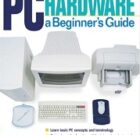“Unlocking the Potential of Internet of Things (IoT): A Guide for Beginners”
In the realm of technology, the Internet of Things (IoT) stands as a beacon of innovation, promising a connected world where devices, data, and people seamlessly interact. For beginners exploring this exciting field, understanding the basics of IoT is the first step toward unlocking its vast potential. Let’s embark on a journey to discover what IoT is, its applications, benefits, challenges, and how you can get started on your IoT journey.
What is the Internet of Things (IoT)?
Definition:
The Internet of Things (IoT) refers to a network of interconnected devices embedded with sensors, software, and other technologies that enable them to collect and exchange data over the internet. These devices, ranging from smartphones and wearables to industrial machinery and smart home appliances, communicate with each other to perform tasks and provide insights.
Key Components:
- Sensors: Devices are equipped with sensors to gather data such as temperature, motion, and location.
- Connectivity: IoT devices connect to the internet or local networks via Wi-Fi, Bluetooth, or cellular networks.
- Data Processing: Collected data is processed locally or in the cloud, where algorithms analyze and derive insights.
- Action: Based on the analyzed data, IoT devices can take automated actions, such as adjusting settings or sending alerts.
Applications and Examples of IoT
1. Smart Homes:
- Home Automation: Control lights, thermostats, and appliances remotely for convenience and energy efficiency.
- Security: Smart cameras and doorbells provide real-time monitoring and alerts for enhanced home security.
- Health Monitoring: Wearable devices track fitness, sleep, and health metrics, providing insights for wellness.
2. Industrial IoT (IIoT):
- Manufacturing: Optimize production lines, monitor equipment health, and enable predictive maintenance.
- Supply Chain: Track goods in transit, improve logistics, and enhance inventory management.
- Energy Management: Smart meters and sensors optimize energy usage, reducing costs in factories and warehouses.
3. Healthcare:
- Remote Patient Monitoring: Monitor vital signs and health metrics for patients at home or in hospitals.
- Medical Asset Tracking: Track medical equipment and supplies for efficient inventory management.
- Telemedicine: Enable remote consultations and diagnoses for improved access to healthcare services.
4. Agriculture:
- Precision Farming: Monitor soil conditions, moisture levels, and crop health for optimal farming practices.
- Livestock Monitoring: Track the health and location of livestock to improve productivity and well-being.
- Crop Monitoring: Drones equipped with IoT sensors survey fields, detect pests, and optimize harvesting.
Benefits of IoT for Beginners
1. Convenience and Efficiency:
- Automation: Automate routine tasks for convenience and efficiency in daily life.
- Remote Control: Control devices and systems remotely for enhanced convenience and flexibility.
- Data Insights: Gain valuable insights from collected data for informed decision-making.
2. Improved Quality of Life:
- Health and Wellness: Monitor personal health metrics for improved fitness and well-being.
- Safety and Security: Enhance home security and safety with smart devices and sensors.
- Accessibility: Improve accessibility for individuals with disabilities through IoT-enabled solutions.
3. Learning and Exploration:
- Hands-On Experience: Gain practical experience in working with IoT devices and systems.
- Creative Projects: Explore IoT projects and experiments to unleash creativity and innovation.
- Career Opportunities: Develop skills in IoT for potential career opportunities in a growing field.
Challenges and Considerations
1. Security and Privacy:
- Data Security: Protect sensitive data from cyber threats and unauthorized access.
- Privacy Concerns: Be mindful of privacy implications when using IoT devices that collect personal data.
- Cyber Attacks: Understand the risks of cyber attacks and take measures to secure IoT devices.
2. Compatibility and Interoperability:
- Device Compatibility: Ensure IoT devices are compatible and can communicate with each other.
- Interoperability: Address challenges of different IoT platforms and protocols working together.
- Integration: Integrate IoT devices into existing systems and networks seamlessly.
3. Cost and Maintenance:
- Initial Investment: Consider the costs of purchasing IoT devices and systems.
- Maintenance: Regularly update and maintain IoT devices for optimal performance and security.
- Lifecycle Management: Plan for the lifecycle of IoT devices, including upgrades and replacements.
Getting Started with IoT
1. Explore IoT Devices:
- Smart Home Devices: Start with simple smart home devices like smart plugs, lights, or thermostats.
- Development Kits: Experiment with IoT development kits and platforms for hands-on learning.
- Online Resources: Explore online tutorials, forums, and courses to learn about IoT basics and projects.
2. Set Up Your IoT System:
- Choose a Platform: Select an IoT platform or ecosystem that fits your needs and devices.
- Connect Devices: Follow instructions to connect and configure your IoT devices to the platform.
- Explore Features: Explore features such as automation, schedules, and data monitoring.
3. Learn and Experiment:
- Hands-On Projects: Start with simple IoT projects like controlling lights or monitoring temperature.
- Coding Skills: Learn basic programming skills to create custom IoT applications and automations.
- Troubleshooting: Practice troubleshooting common IoT issues to enhance your skills.
4. Stay Informed and Engaged:
- Follow IoT Trends: Stay updated with the latest trends, technologies, and applications in IoT.
- Join Communities: Participate in IoT communities, forums, and events to connect with others.
- Continued Learning: Explore advanced IoT concepts and applications as you progress in your journey.
Conclusion
As a beginner exploring the world of Internet of Things (IoT), the possibilities are vast and exciting. From smart homes to industrial automation, IoT offers a new way to connect, interact, and innovate. By understanding the basics of IoT, exploring its applications, and starting with hands-on projects, beginners can unlock the potential of this transformative technology. While there are challenges to consider, such as security and compatibility, the benefits of convenience, efficiency, and learning opportunities make the journey worthwhile. Embrace the future of connected devices and embark on your IoT journey with curiosity, creativity, and a sense of exploration. The world of IoT awaits, ready to be explored and shaped by your imagination.


